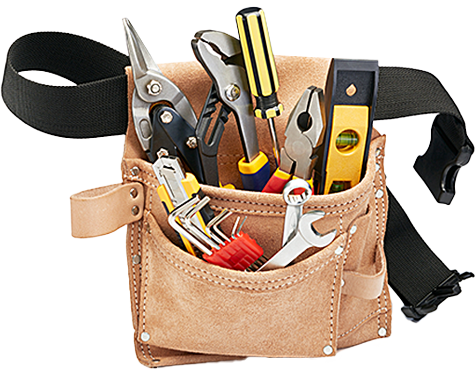Water Saving Plumbing Practices are essential in today’s world, where water conservation is more critical than ever. Adopting these practices is a smart move for any household. Not only do they help in preserving our precious resource, but they also play a significant role in reducing monthly water bills. For residents in Dallas, TX, and surrounding areas like Richardson, TX, being mindful of how we use water can make a substantial difference. It’s about making small changes that have a big impact on our environment and wallets.
Understanding the importance of water-saving plumbing practices is the first step toward a more sustainable lifestyle. Whether it’s fixing leaks promptly or installing low-flow fixtures, every action counts. Homeowners in Carrollton, TX, have seen firsthand how such adjustments can lead to significant savings. It’s encouraging to know that by being proactive, we can contribute to water conservation efforts.
Implementing water-saving plumbing practices doesn’t have to be complicated or expensive. Simple habits like turning off the tap while brushing your teeth or opting for showers over baths can add up. These practices are easy to adopt and can become second nature with a bit of mindfulness. By doing so, families not only save water but also reduce their utility expenses.
As we explore various water-saving plumbing practices throughout this article, remember that every drop saved is a step toward a more sustainable future. From Dallas to Richardson and Carrollton, the message is clear: small changes in our daily routines can lead to significant environmental and financial benefits. Let’s dive into how we can make these practices a part of our lives and lead by example in our communities.
The Importance of Efficient Toilets in Water Conservation
Efficient toilets play a crucial role in water conservation, making them a cornerstone of Water Saving Plumbing Practices. By opting for models designed to use less water per flush, households can significantly reduce their water usage. This shift not only benefits the environment but also lowers monthly water bills. In Richardson, TX, residents have seen a noticeable difference in their consumption and costs by making this simple change demonstrating the real-world impact of Water Saving Plumbing Practices.
Installing a low-flow toilet is a straightforward step toward sustainable living and a vital part of Water Saving Plumbing Practices. These toilets are designed to provide the same level of functionality while using a fraction of the water. It’s an investment that pays off by conserving water and saving money in the long run. Families in Carrollton, TX, have embraced this upgrade, contributing to the community’s overall water conservation efforts and reinforcing the importance of adopting Water Saving Plumbing Practices.
Dual-flush toilets offer another layer of efficiency, giving users the option to choose how much water is used per flush. This feature is particularly useful in households with varied needs, allowing for greater control over water use. By adopting this technology, homeowners can further tailor their Water Saving Plumbing Practices to their specific requirements. It’s a smart choice for those looking to maximize their conservation efforts while staying committed to sustainable habits.
In conclusion, the importance of efficient toilets in water conservation cannot be overstated. They are a key element of Water Saving Plumbing Practices, offering a practical way to reduce water usage and utility bills. As more people in Dallas and beyond adopt these innovations, the collective impact on our water resources and environment will continue to grow. It’s a positive step forward in our journey towards sustainability, driven by the widespread implementation of Water Saving Plumbing Practices.

Water Saving Plumbing Practices for Your Kitchen
Moving from the bathroom to the kitchen, water saving plumbing practices can also make a significant difference. Installing aerators on kitchen faucets is a simple yet effective step. These devices mix air with water, reducing the flow without compromising pressure. Homeowners in Richardson, TX, have found that this small change can lead to noticeable savings on their water bills.
Another impactful practice involves monitoring and repairing leaks promptly. A dripping faucet can waste a surprising amount of water over time. By fixing leaks as soon as they’re detected, families can conserve water and avoid unnecessary increases in their utility bills. This proactive approach not only saves water but also prevents potential damage to the kitchen’s plumbing system.
For those looking to upgrade, considering water-efficient dishwashers is a wise choice. Modern models are designed to use less water and energy while still providing sparkling clean dishes. By making this switch, residents in Carrollton, TX, have reduced their water usage significantly. It’s a smart investment that benefits both the environment and household budgets.
Lastly, adopting mindful habits in the kitchen can further enhance water conservation efforts. Simple actions like not letting the tap run while washing dishes or using a basin to wash fruits and vegetables can save gallons of water. These habits, when combined with the right plumbing practices, can lead to substantial water savings. It’s about making conscious choices that contribute to a larger goal of sustainability.
Shower Better: Upgrading to Water-Efficient Models
Showering accounts for a significant portion of household water use, but upgrading to water-efficient showerheads can drastically reduce this consumption. These modern fixtures are designed to use less water while still providing a satisfying shower experience. Residents in Richardson, TX, have embraced these upgrades, noting a decrease in their water bills without compromising on comfort. It’s a smart example of Water Saving Plumbing Practices that benefits both the environment and personal finances.
Additionally, taking shorter showers is an effective way to conserve water and enhance overall Water Saving Plumbing Practices at home. By reducing shower time, even by a few minutes, individuals can save a considerable amount of water over time. This practice, combined with the use of water-efficient showerheads, amplifies savings. It’s a straightforward habit that, when adopted widely, becomes a powerful component of effective Water Saving Plumbing Practices.
For those interested in further optimizing their water use, installing a shower timer offers a practical solution and supports ongoing Water Saving Plumbing Practices. This device encourages users to be more mindful of their water usage by alerting them when it’s time to finish up. Families in Carrollton, TX, have found that shower timers help them stick to their water-saving goals, making conservation a consistent part of their daily routine and reinforcing their commitment to Water Saving Plumbing Practices.
Lastly, repairing any leaks in the shower can prevent unnecessary water waste and strengthen household Water Saving Plumbing Practices. A leaky showerhead or faucet can drip away gallons of water, unnoticed, over time. Promptly addressing these issues not only conserves water but also avoids the extra cost on water bills. By focusing on these aspects, households can significantly enhance their Water Saving Plumbing Practices, contributing to a more sustainable lifestyle.
Smart Landscaping: Reducing Outdoor Water Use
Smart landscaping is another avenue through which households can implement Water Saving Plumbing Practices, significantly reducing outdoor water use. By choosing native plants that are well-adapted to the climate in Richardson, TX, residents can create beautiful gardens that require less water. These plants thrive in the local environment, minimizing the need for frequent watering and thus conserving water. This approach not only beautifies outdoor spaces but also supports local biodiversity while advancing effective Water Saving Plumbing Practices.
Incorporating drip irrigation systems into gardens is a highly efficient method to ensure plants receive the water they need without waste. Drip irrigation delivers water directly to the roots of plants, reducing evaporation and runoff making it a core feature of modern Water Saving Plumbing Practices. Homeowners in Carrollton, TX, have found this system to be effective in maintaining their gardens while significantly cutting down on water usage. It’s a practical solution that aligns with responsible Water Saving Plumbing Practices, ensuring every drop of water is used wisely.
Another strategy involves collecting rainwater for garden use, a practice that further supports Water Saving Plumbing Practices by reducing reliance on municipal water supplies. By setting up rain barrels, families can capture and store rainwater, which can then be used to water plants during drier periods. This method not only conserves water but also reduces the demand on city water systems, reinforcing a sustainable approach rooted in Water Saving Plumbing Practices.
Lastly, mulching plays a critical role in conserving soil moisture and reducing the need for watering. Applying a layer of mulch around plants helps retain moisture in the soil, keeping roots cool and reducing water evaporation. This practice, when combined with other strategies, amplifies the effectiveness of outdoor Water Saving Plumbing Practices. Together, these thoughtful landscaping choices embody the true spirit of Water Saving Plumbing Practices, proving that environmentally conscious gardening can have a lasting impact on water conservation.
Detecting and Fixing Leaks: A Guide for Homeowners
Detecting and fixing leaks is a critical component of Water Saving Plumbing Practices, essential for homeowners aiming to conserve water. A small drip from a leaky faucet can waste a significant amount of water over time, impacting both the environment and your water bill. Residents in Richardson, TX, have discovered that regular inspections of their plumbing systems an important part of responsible Water Saving Plumbing Practices can prevent these minor issues from becoming major problems. By addressing leaks promptly, they not only save water but also avoid the potential for costly repairs down the line.
In Carrollton, TX, homeowners are taking proactive steps by installing water leak detection devices, reinforcing their commitment to effective Water Saving Plumbing Practices. These innovative tools monitor the flow of water through pipes and alert homeowners to any unusual activity, indicating a potential leak. This technology allows for immediate action, minimizing water waste and protecting the home from water damage. It’s a smart investment that complements other Water Saving Plumbing Practices, ensuring efficient water use throughout the household.
Educating yourself on common signs of leaks is another effective strategy for water conservation and a key part of successful Water Saving Plumbing Practices. Unexplained increases in your water bill, the sound of running water when all taps are off, and damp spots on floors or walls can all signal a leak. By staying vigilant and knowing what to look for, you can identify and address leaks early. This awareness empowers homeowners to uphold strong Water Saving Plumbing Practices and maintain an efficient home plumbing system.
Lastly, enlisting the help of a professional plumber for regular maintenance can prevent leaks before they start and support long-term Water Saving Plumbing Practices. These experts can spot potential issues that might not be obvious to the untrained eye, ensuring your plumbing system operates at peak efficiency. Through these combined efforts, embracing Water Saving Plumbing Practices becomes a seamless part of daily life, contributing to significant water conservation and household savings.
Water Saving Plumbing Practices for Laundry Rooms
Laundry rooms often consume a significant amount of water, but adopting water-saving plumbing practices can lead to substantial savings. By choosing high-efficiency washing machines, residents in Richardson, TX, can cut down on water usage without sacrificing cleanliness. These machines are designed to use less water and energy per load, making them an eco-friendly choice for any household. It’s a simple switch that can have a big impact on both the environment and utility bills.
Another effective practice is to wash full loads of laundry instead of multiple smaller ones. This approach maximizes the efficiency of each wash cycle, conserving water and energy. People in Carrollton, TX, have found that this method not only saves water but also reduces wear and tear on their machines. By being mindful of how much laundry you’re doing, you can make a significant difference in water consumption.
Installing a laundry sink with a high-efficiency faucet adds another layer of conservation. These faucets often come equipped with aerators, which reduce water flow while maintaining pressure. This means you can pre-treat or hand-wash items without wasting excess water. It’s a practical addition to any laundry room that complements other water-saving practices.
Finally, reusing greywater from laundry can provide an additional source of water for landscaping needs. Systems that redirect greywater to your garden help in reusing water that would otherwise go to waste. This practice not only conserves water but also benefits your garden by providing it with a regular water source. With these practices in place, households can significantly reduce their water footprint, contributing to a more sustainable future.
The Role of Water-Saving Fixtures and Appliances
Incorporating water-saving fixtures and appliances into homes is a crucial step towards reducing water usage. By choosing faucets, showerheads, and toilets that are designed to use less water, residents in Richardson, TX, can make a significant impact. These fixtures often come with advanced technologies that maintain water pressure while using less water. As a result, families enjoy the same comfort and efficiency without wasting resources.
Upgrading to energy-efficient appliances also plays a vital role in water conservation. Dishwashers and washing machines that are labeled as high-efficiency use less water and electricity, making them ideal for eco-conscious households. In Carrollton, TX, many have seen their water bills decrease after making these smart swaps. It’s a change that not only benefits the environment but also offers long-term savings on utility costs.
Regular maintenance of plumbing fixtures and appliances ensures they operate efficiently, further supporting water-saving efforts. Checking for leaks and wear can prevent water waste and extend the lifespan of these items. Homeowners can easily adopt simple habits, like inspecting hoses on washing machines or replacing worn-out washers in faucets, to keep everything in top condition. This proactive approach minimizes the need for replacements and repairs, contributing to overall water conservation.
Lastly, educating oneself about the latest water-saving technologies can uncover new opportunities to save water. Innovations in plumbing and appliance design continue to evolve, offering more ways to conserve. By staying informed and ready to upgrade when needed, families can significantly enhance their water-saving practices. This commitment to conservation ensures that households not only save on bills but also contribute to a sustainable future for all.
Implementing a Home Water Audit for Maximum Savings
Implementing a home water audit is a strategic move for households aiming to maximize their water savings. By carefully examining how water is used throughout the home, residents can identify areas where improvements can be made. This process often reveals leaks or inefficiencies that went previously unnoticed. As a result, families in Richardson, TX, can make targeted changes that significantly reduce their water consumption.
One of the key steps in a home water audit involves checking all plumbing fixtures for leaks. Even a small drip from a faucet can waste a substantial amount of water over time. Residents in Carrollton, TX, have found that fixing these leaks promptly is one of the most effective water-saving plumbing practices. It’s a simple action that can lead to significant savings on water bills.
Another important aspect of the audit is assessing the efficiency of current water-using appliances. Upgrading to high-efficiency models can dramatically lower water usage. This not only aligns with water-saving plumbing practices but also contributes to a more sustainable household. By making these upgrades, homeowners invest in long-term savings and environmental conservation.
Finally, conducting a home water audit allows families to develop a comprehensive water-saving plan. This plan might include scheduling regular maintenance checks, installing water-efficient fixtures, and adopting more mindful water usage habits. With a clear strategy in place, households can ensure they are maximizing their water savings and contributing to a more sustainable future.

Frequently Asked Questions
What are water saving plumbing practices?
Water saving plumbing practices include installing low-flow fixtures in your home. These devices reduce water use without sacrificing performance. Regularly checking for leaks also prevents water wastage. Additionally, using water-efficient appliances can significantly lower your monthly bills and conserve resources.
How do leaky faucets impact water usage?
Leaky faucets can dramatically increase water usage, wasting gallons of water each day. Even a small drip adds up over time, leading to higher utility bills. Fixing these leaks promptly is a key water saving plumbing practice. This simple step can save a significant amount of water, helping both the environment and your wallet.
Can installing low-flow fixtures reduce bills?
Yes, installing low-flow fixtures can lead to lower monthly bills. These fixtures use less water per minute, cutting down on overall consumption. As a result, homeowners see a drop in their water expenses. This makes them a smart choice for anyone looking to save on utilities and conserve water.
Why are water saving plumbing practices important?
Water saving plumbing practices are crucial for conserving our precious resource, water. By reducing consumption, we not only lower our bills but also help the environment. These practices, like fixing leaks and installing efficient fixtures, make a big impact. Ultimately, they ensure a sustainable future for all.
What is the role of a plumber in conservation?
Plumbers play a vital role in water conservation by installing efficient fixtures and repairing leaks. They advise on the best water saving plumbing practices for homes. Their expertise helps reduce water waste and lower utility bills. Overall, plumbers are key allies in the effort to conserve water resources.





